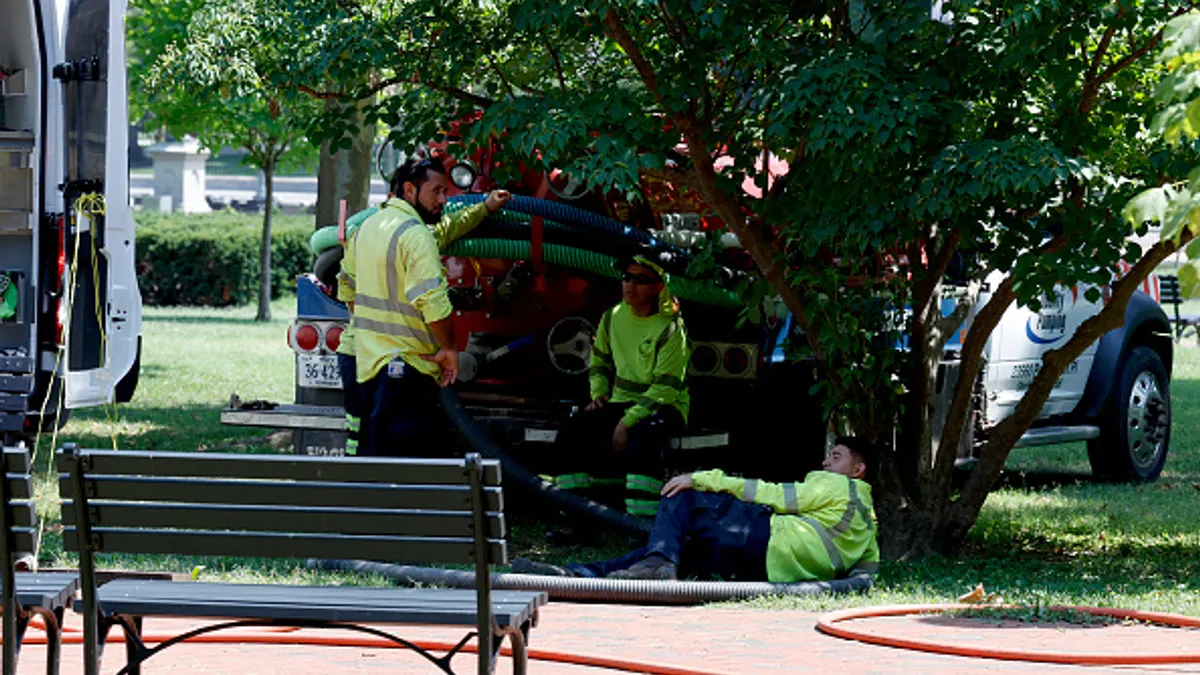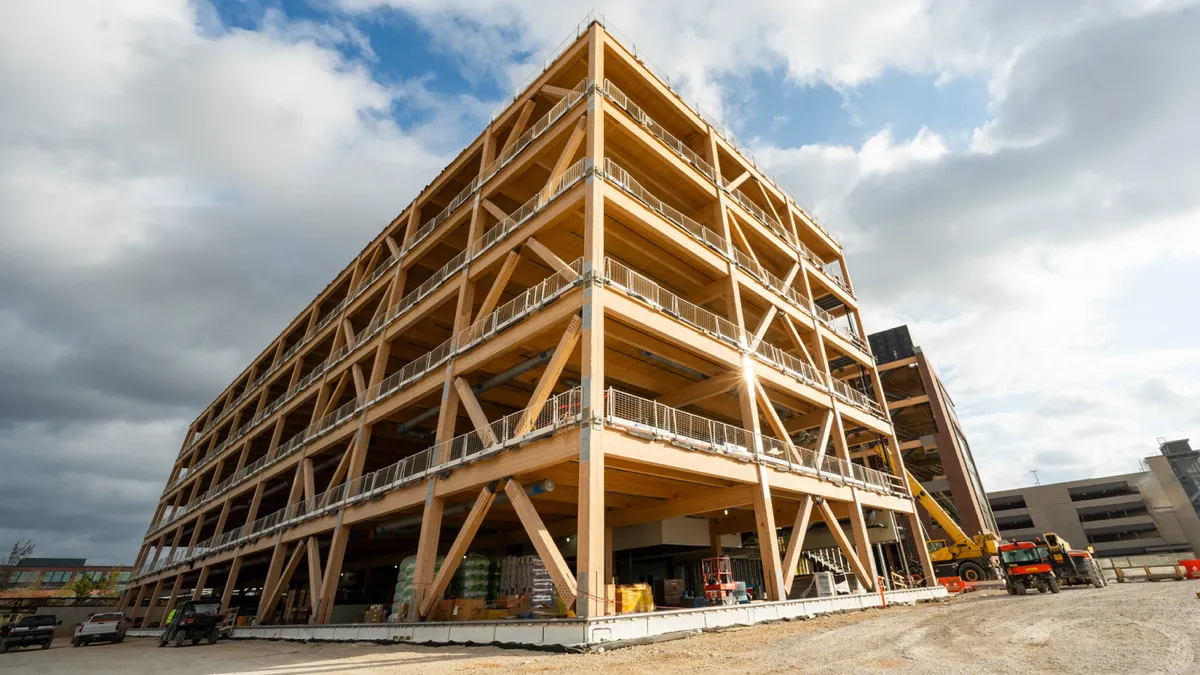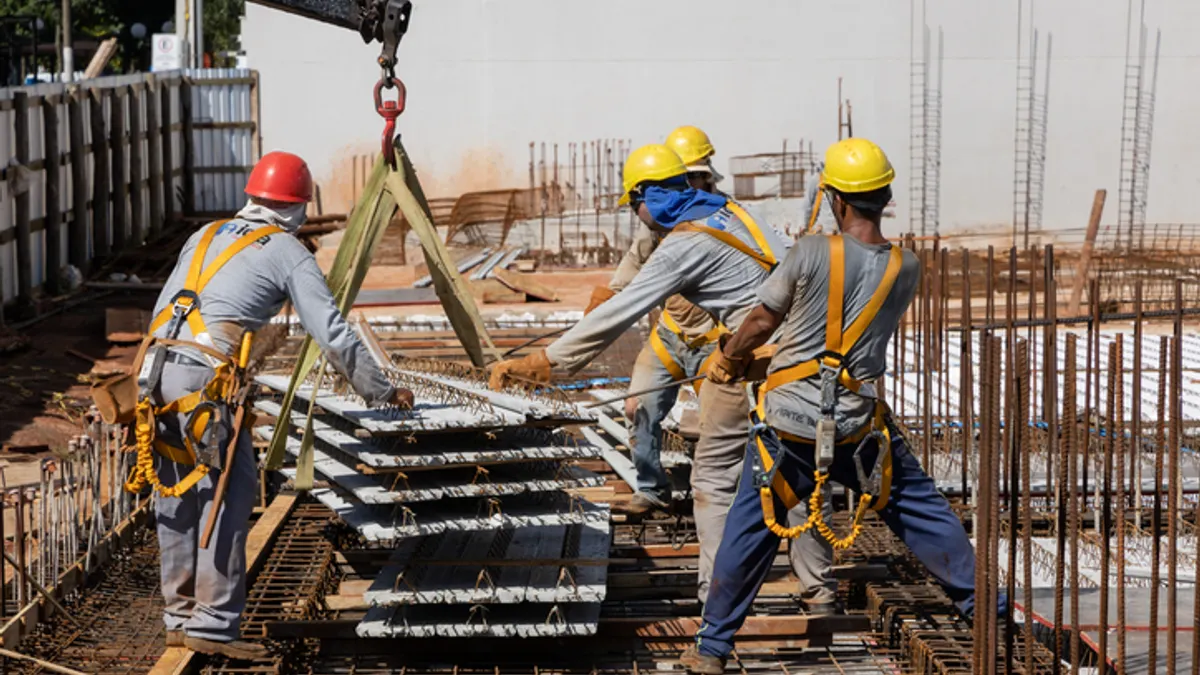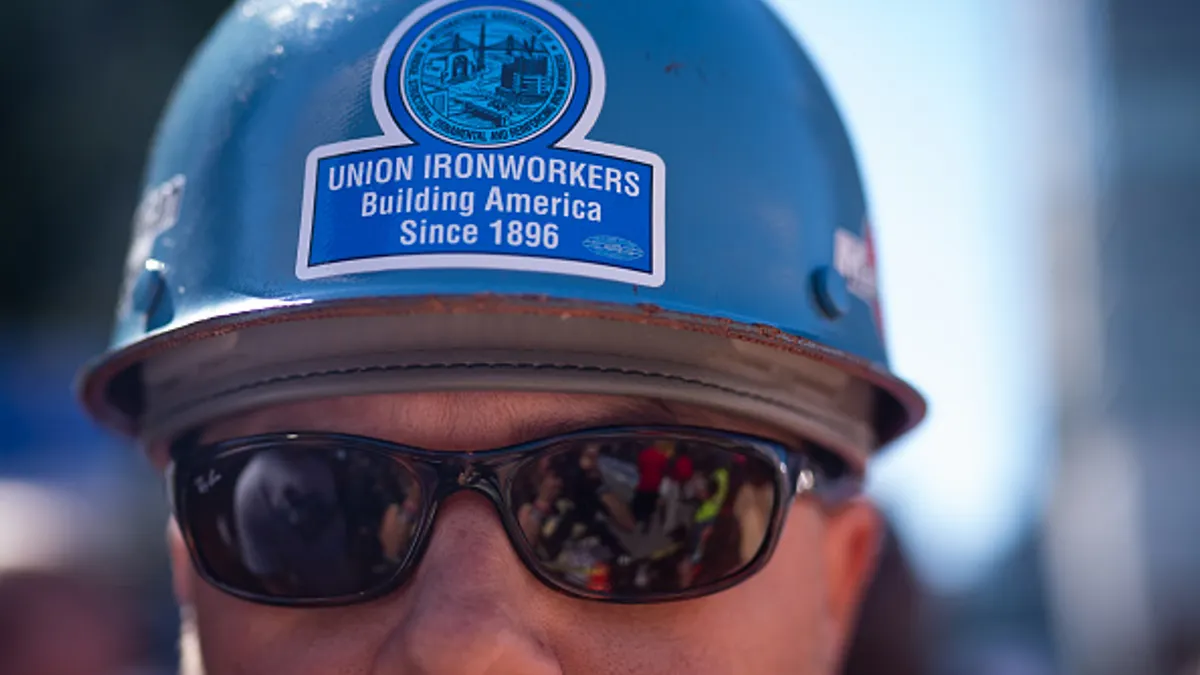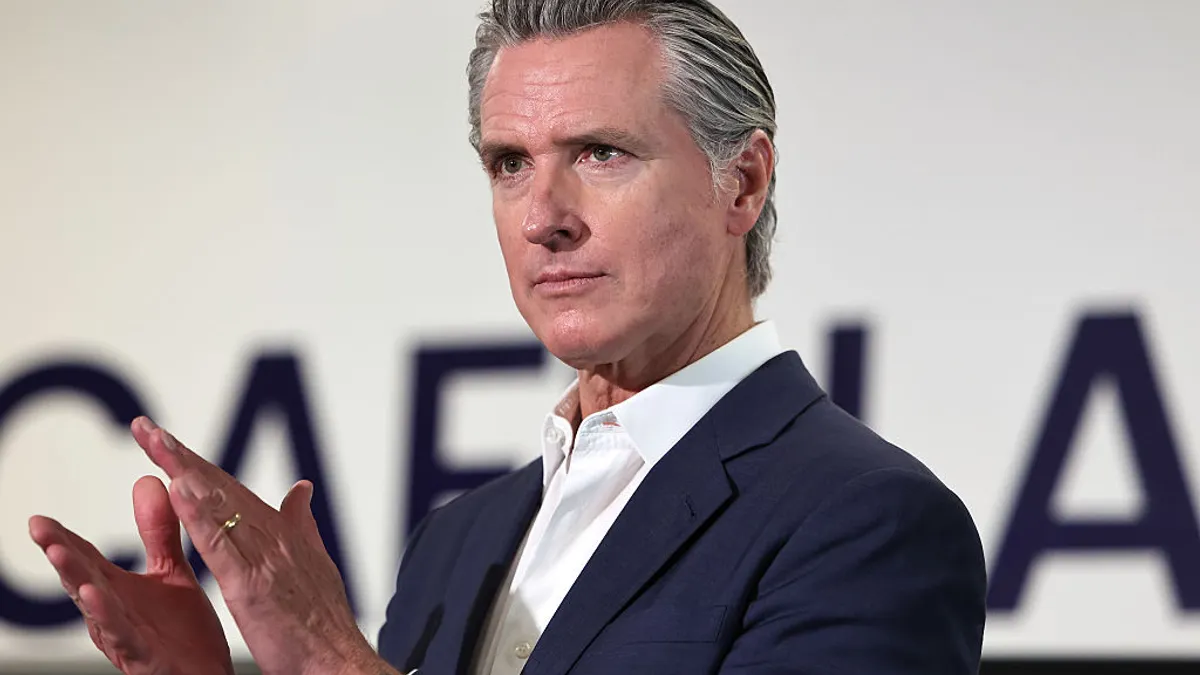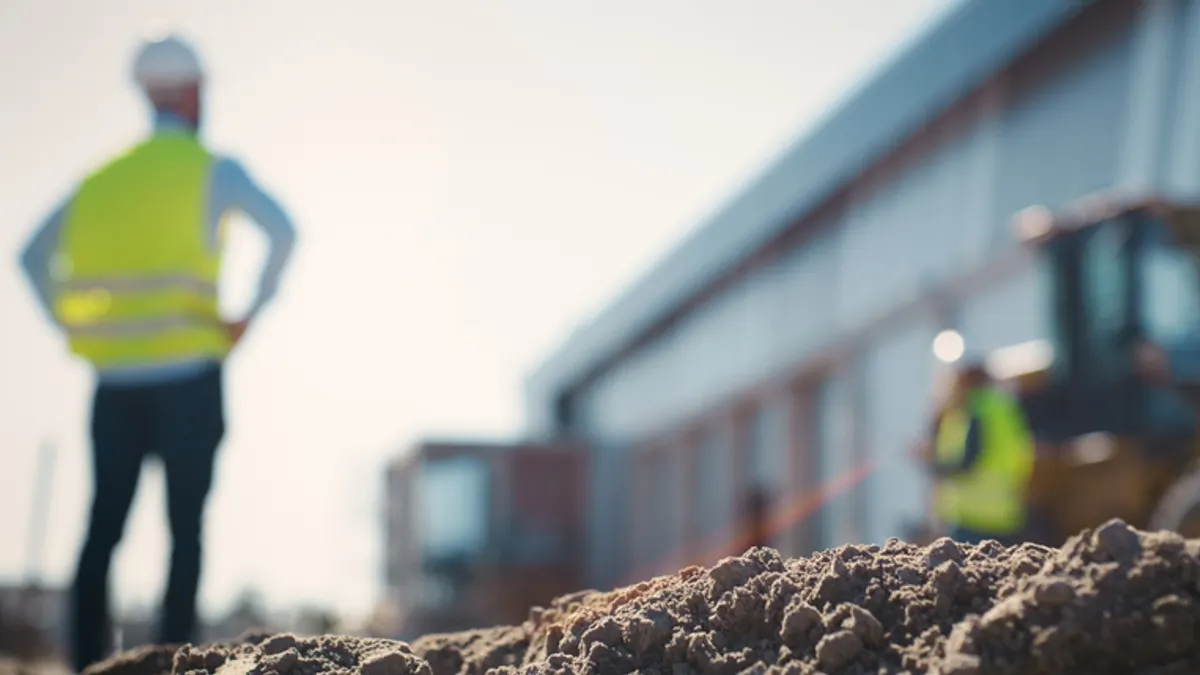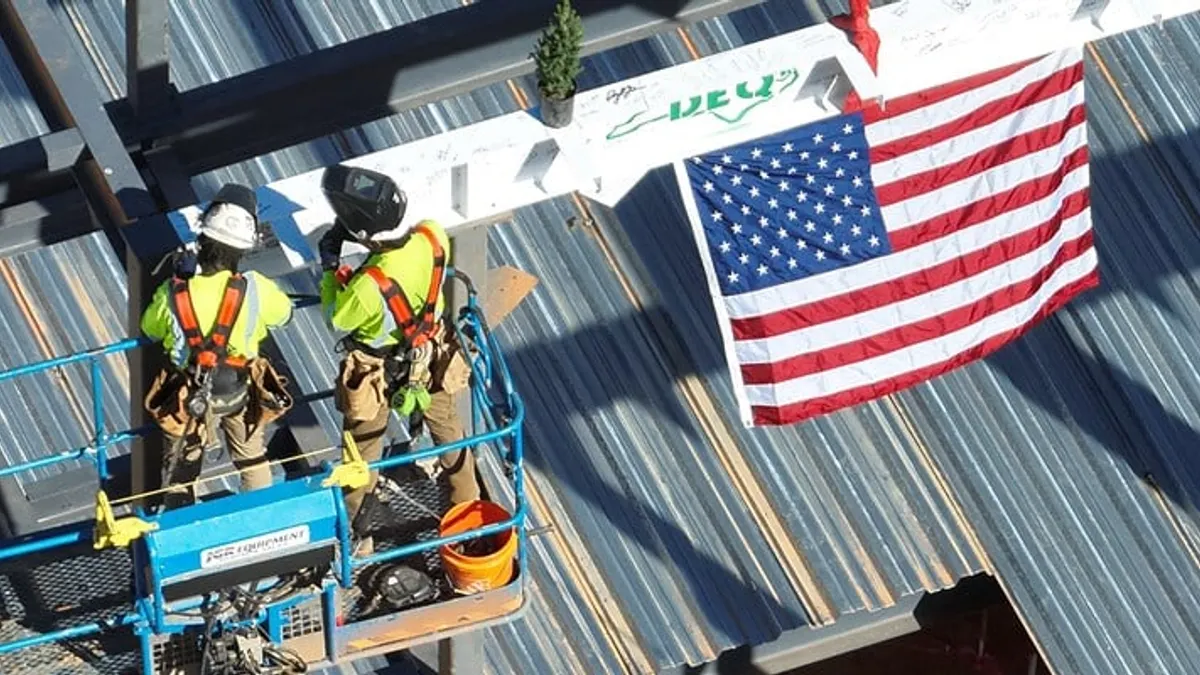When President Donald Trump returned to the White House earlier this year, it appeared that OSHA’s proposed heat rule would be abandoned. Comments during the agency’s informal public hearings, which began June 16 and run through July 2, however, could indicate otherwise.
“We all thought that when the administration changed, the heat rule was going to die,” Jason Mills, OSHA litigation lawyer and partner for Chicago-based law firm Sidley Austin, told Construction Dive. “And then the administration took a little bit of an unexpected turn with this choice [of Lori Chavez-DeRemer] for the secretary of labor. And it turns out that there's both union support and I think business support pulling in both directions now.”
A former Republican congresswoman from Oregon, Chavez-DeRemer came into office in March with a favorable rapport with unions due to her past support for legislation like the PRO Act.
Though the public rulemaking hearings aren’t over yet, a lot has been revealed early on.
“On the first day of hearings OSHA went out of its way to say ‘if’ the rule should continue through rulemaking, ‘if’ the rulemaking continues,” said Alana Genderson, partner at Sidley Austin. “So they're giving themselves the option to stop. But I think they are receiving pressure both from labor organizers but also from businesses.”
Although the rule proposed at the end of President Joe Biden’s term may not come to pass, it’s likely that some other form of a heat standard will enter OSHA rule books, experts say.
“I think there’s going to be something but not what we’re looking at,” Phillip Russell, OSHA and employment lawyer, litigator and advisor for Washington, D.C.-based firm Ogletree Deakins, told Construction Dive.
What’s most likely to happen, experts agree, is that OSHA ends up adopting a more performance-based regulation than the prescriptive, detailed rule first published last summer.
Performance vs. detailed standard
The proposed rule is lengthy and contains specific guidance for how employers would need to employ the Heat Injury and Illness Prevention Plan. The rule had multiple requirements, including thresholds for when the plan would need to be in place, acclimatization practices, mandated rest breaks for workers and access to clean drinking water and shade.
In particular, detractors took issue with acclimatization guidelines and the temperature trigger for when the heat plan would need to be in place.
“It was so detailed and so over the top in terms of the microregulation that even employers with robust, detailed, best-ever-on-the-planet heat illness and prevention programs could be cited,” Russell told Construction Dive.
Critics of the standard at the time said those elements of the guidance were far too specific for widely varying regions of the U.S.
“We have been pretty outspoken in raising concerns that the rule initially proposed during the Biden administration is flawed in attempting to create a single, nationwide heat threshold,” Brian Turmail, vice president of public affairs and workforce for the Associated General Contractors of America, told Construction Dive. “Mid-80’s in Jackson in June is a cold front, whereas it prompts heat warnings in Fairbanks. Any final rule should take into account local weather patterns.”
On June 18, presenters representing North America’s Building Trades Unions spoke at the hearing, urging the panel to consider keeping aspects of the Biden-era rule to protect workers.
“I don’t know ultimately what OSHA should do as long as it’s protective,” Chris Cain, director of safety and health for NABTU, said at the hearing. “However, contractors in our experience really like specification-based standards so that they have a way to determine that they’re in compliance with the rule.”
Appropriate measures
Experts told Construction Dive that, if OSHA ends up adopting a heat standard under the Trump administration, it will likely do away with a lot of the detailed, prescriptive approach and go to a more performance-based standard that instead requires contractors to demonstrate they have taken action to protect workers.
“I think a performance-based standard would be more appropriate,” Russell said. “Have contractors do an assessment, indoor or outdoor, and implement appropriate measures for the workplace to keep workers safe from heat.”
Some issues remain, however.
Seven states — California, Colorado, Minnesota, Oregon, Washington, Maryland and Nevada — already have heat rules, Genderson said, and 16 more have proposed rules. The standards vary, making it challenging for nationwide builders.
There is a possibility, Genderson said, of OSHA “dicing up” the rule geographically and implementing different requirements for when a rule must be in place for different regions.
Nonetheless, for the time being, no specific nationwide heat standard is on the books.
“Right now, there's nothing new to do because OSHA is enforcing under the general duty clause,” Mills said. “So I would go back to the OSHA guidance, which is shade, water, rest.”
Even then, experts say the Biden-era proposal can be used as a safety tool.
“You now have a roadmap of the most aggressive version of OSHA,” Genderson said. “Here's their rule. So you should look at it and sort of take bits and pieces. You don't have to adopt it wholesale, but at least that's a good guide.”



